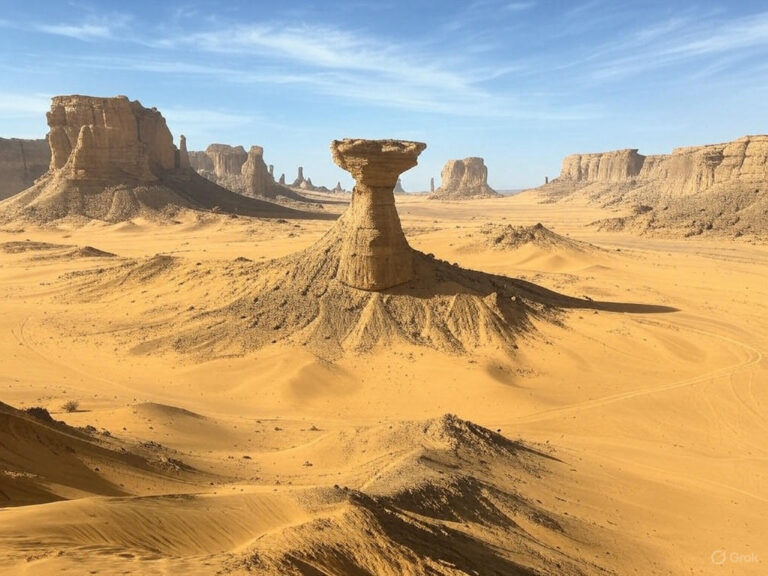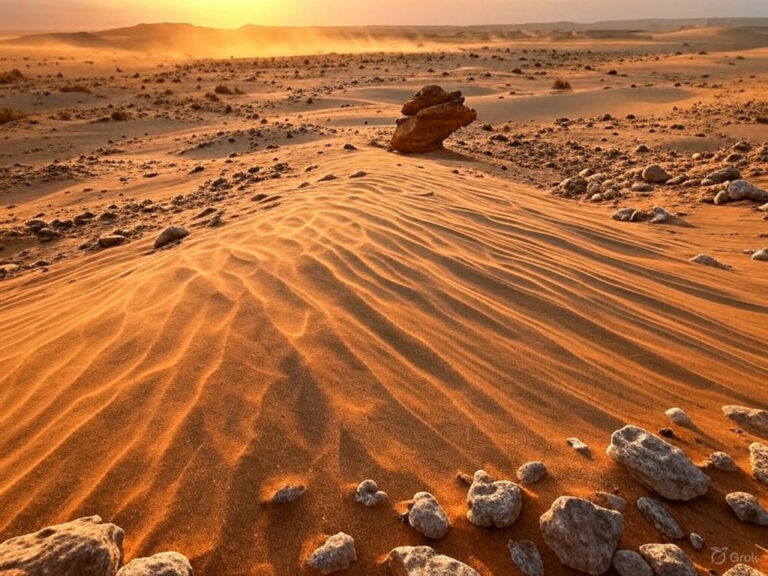Overview of Australian Continent
🌏 Introduction to the Australian Continent
Australia, often described as the “island continent”, is the smallest and flattest of all the continents, yet it stands out for its enormous wealth in natural resources and ecological uniqueness. Entirely located in the Southern Hemisphere, Australia is surrounded by the Indian Ocean to the west and the Pacific Ocean—specifically the Coral and Tasman Seas—to the east. Despite its relatively smaller size, the Australian landmass boasts some of the oldest and most stable geological formations in the world, many dating back to the Precambrian era. The continent includes mainland Australia, the island state of Tasmania, and several smaller islands and external territories such as Christmas Island and the Cocos (Keeling) Islands.

🌊 Surrounding Seas and Maritime Identity
Australia’s maritime boundaries are framed by several important seas and straits, each with environmental and strategic importance. To the north lies the Arafura Sea, separating it from the Indonesian archipelago, and the Timor Sea, which is rich in hydrocarbon reserves and has seen maritime boundary disputes with Timor-Leste. To the east, the Coral Sea houses the iconic Great Barrier Reef, the world’s largest coral system and a UNESCO World Heritage Site, currently threatened by climate change-induced coral bleaching. The Tasman Sea lies to the southeast, connecting Australia to New Zealand, playing a role in both oceanic currents and diplomatic ties under regional groupings like ANZUS and the Pacific Islands Forum. To the south lies the Great Australian Bight—an expansive, open curve of coastline with potential for offshore energy exploration. On the western flank, the Indian Ocean opens up Australia’s engagement with the Indian Ocean Rim countries, including India, via groupings like IORA and QUAD.
🧭 Cardinal Directional Layout of Key Geographical Features
Moving northward, the Cape York Peninsula juts into the Torres Strait, a shallow passage that separates Australia from Papua New Guinea. This region is known for its indigenous communities, rich biodiversity, and proximity to the Coral Triangle. The Top End of the Northern Territory includes Darwin and Kakadu National Park—both significant for their ecological and cultural value. Darwin also serves as a strategic naval outpost for the United States under recent defence pacts.
To the east, we encounter the Great Dividing Range, Australia’s most significant mountain chain, running parallel to the coast from Queensland through New South Wales to Victoria. Though modest in elevation, this range is critical for river catchments and climate modulation, creating a rain-shadow zone inland. The range gives rise to several rivers including the Murray and Darling, which together form Australia’s largest river system, vital for agriculture in the otherwise arid interior. This east coast is also home to Sydney, Canberra, and Brisbane—major urban centres shaping Australia’s economic and political narrative.
Looking south, we find the island state of Tasmania, separated by the Bass Strait, known for its rugged wilderness, penal colony heritage, and cool-temperate rainforests. Tasmania is a biodiversity hotspot, home to species like the Tasmanian Devil. Politically, it adds to Australia’s federal diversity.
Turning westward, the vast expanses of Western Australia dominate, characterised by the Outback, extensive mineral reserves, and desert landscapes like the Great Sandy and Gibson Deserts. Cities like Perth represent Australia’s westward orientation towards Africa and the Middle East. The Pilbara and Kimberley regions, though remote, are central to Australia’s resource economy, especially iron ore and bauxite exports to China and Japan.
🧭 Strategic Position & Geopolitical Identity
While geographically isolated, Australia holds significant geopolitical relevance. It lies close to Southeast Asia and occupies a crucial position along the Indo-Pacific maritime routes, with key straits such as the Torres Strait in the north and the Bass Strait in the south enhancing its strategic value. Politically, Australia is deeply integrated into global and regional alliances. It is a prominent member of the QUAD (Quadrilateral Security Dialogue) alongside India, Japan, and the USA, highlighting its role in the evolving Indo-Pacific narrative. Historically a part of the British Empire, Australia continues to be a member of the Commonwealth, with the British Monarch as its ceremonial head, while functioning as a modern, stable democracy.
🧱 Ancient Landform with Stable Geology
Australia rests on the Indo-Australian Plate, making it one of the most tectonically stable continents. Unlike Asia or South America, it lacks young fold mountains and active volcanic belts. This geological stability has led to the dominance of old, weathered, and eroded landscapes, particularly evident in its vast deserts and plateaus. While seismic and volcanic activity is rare, minor intraplate earthquakes do occasionally occur. The geological antiquity of Australia has also contributed to the evolution of unique landforms and ecosystems found nowhere else in the world.
🌵 Dominance of Arid Landscapes
A defining feature of the Australian continent is its aridity. Approximately 70% of its land area receives less than 500 mm of rainfall annually, resulting in widespread desertification. The central and western parts of Australia are dominated by expansive deserts such as the Great Victoria Desert, Great Sandy Desert, Gibson Desert, Simpson Desert, and Tanami Desert. Despite the dryness, these regions host distinct ecosystems adapted to harsh climates, and many Aboriginal communities have traditionally inhabited and navigated these landscapes for thousands of years, showcasing extraordinary resilience and harmony with nature.
🏞 Natural Landmarks & Geological Wonders
Australia is home to several iconic natural landmarks and geological features. Uluru (Ayers Rock), a massive sandstone monolith situated in the heart of the continent, is not only a geological marvel but also a sacred site for the Anangu Aboriginal people. The Great Dividing Range, stretching along the eastern coastline, is Australia’s most significant mountain system. It plays a crucial role in determining climatic patterns and is the origin point for major river systems such as the Murray and Darling Rivers. Off the northeastern coast lies the Great Barrier Reef, the world’s largest coral reef system and a UNESCO World Heritage Site. While it attracts global attention for its ecological value, it also faces existential threats from climate change, coral bleaching, and ocean acidification.
🛢 Resource-Rich Terrain
Australia’s economy is deeply intertwined with its mineral wealth, making it one of the world’s leading mining nations. It is the largest global producer of iron ore, bauxite, and uranium, and has significant reserves of gold, copper, and coal. Mining operations are spread across the continent, with major sites such as the Kalgoorlie Super Pit for gold, Olympic Dam for uranium and copper, and the Carmichael Coal Mine in Queensland. Ports such as Abbot Point are strategically developed to facilitate resource exports, especially to countries like China, Japan, and India, thereby making Australia a vital player in global resource supply chains.
🚰 The Murray-Darling Basin: Lifeline in the East
The Murray-Darling Basin forms the heart of Australia’s agricultural economy. Although these rivers are modest in comparison to the great river systems of Asia or South America, they are indispensable for irrigation, drinking water, and sustaining rural communities across southeastern Australia. However, the basin faces multiple challenges, including over-extraction of water, desertification of catchment areas, rising salinity, and growing impacts of climate variability. Sustainable management of this water resource remains a pressing concern in Australia’s environmental policy.
🏛 Polity & Federalism
Australia follows a federal parliamentary constitutional monarchy model. It is divided into six states—New South Wales, Victoria, Queensland, South Australia, Western Australia, and Tasmania—and two mainland territories—the Northern Territory and the Australian Capital Territory (ACT). The national capital, Canberra, was chosen as a compromise location between Sydney and Melbourne and is a planned city modeled after democratic ideals and urban planning principles. While the monarchy is retained as a symbolic head, real executive powers rest with elected representatives and the Prime Minister.
🧑🤝🧑 Culture & Identity
Australia’s cultural identity is an amalgamation of its Anglo-European colonial roots and the rich, enduring heritage of its Aboriginal peoples, who represent the oldest continuing culture in the world, with a history going back more than 60,000 years. Indigenous languages, art forms like dot painting, and spiritual connections to land (Dreamtime beliefs) are integral to the cultural fabric of the continent. In modern times, Australia has embraced multiculturalism, with major urban centers like Sydney, Melbourne, and Brisbane becoming melting pots of global migration, fostering inclusivity and diversity.
🤝 International Relations
On the international stage, Australia plays a pivotal role in the Indo-Pacific region. It maintains strong diplomatic, economic, and defense ties through various bilateral and multilateral forums. Apart from being a member of QUAD, Australia has deep-rooted relationships with ASEAN nations, the USA (through ANZUS), and the European Union. Its relationship with China is characterized by a complex interdependence—while China is a major trade partner, strategic and ideological differences often surface. Importantly, Australia and India have signed a Comprehensive Economic Cooperation Agreement (AI-ECTA) to enhance trade, technology transfer, and regional cooperation.
This introductory overview sets the stage for a deeper exploration of Australia’s physiography. In the following sections, each major geographic feature will be discussed in detail based on maps.




